Flaybrick was opened in 1864 as Birkenhead Cemetery, and contains the memorials to many famous Victorian worthies of Wirral. It is now Grade 2* listed as being of Specific Historical Interest and is one of the Significant Cemeteries of Europe. It is now also an arboretum, containing over 80 species of tree, including some Champions and some rarities.
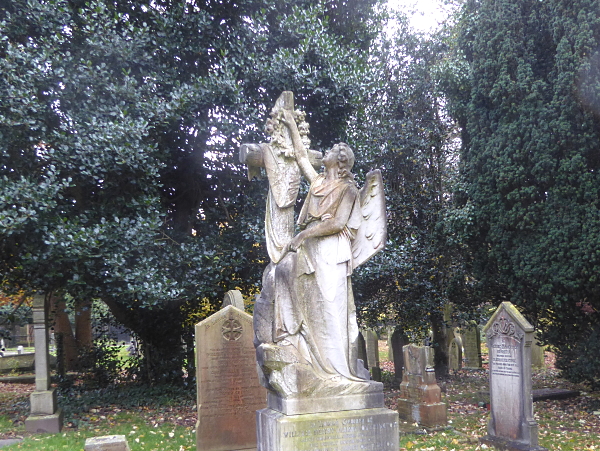
Over 400 of the people buried there were killed in one or other of the World Wars. There is an annual Remembrance Service for them in the old chapel, and this year they attached to the chapel railings a crocheted poppy for each of them, accompanied by a label with the name of the casualty.
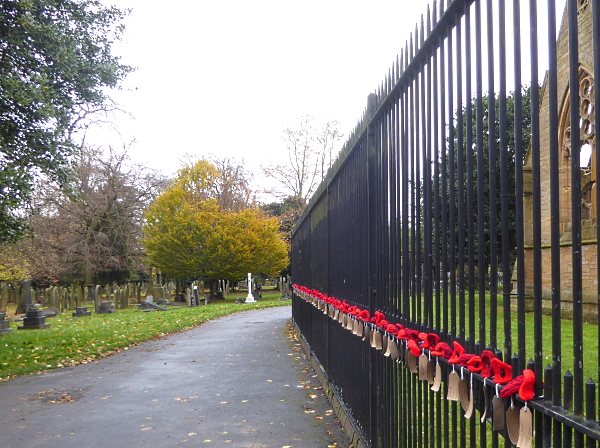
It was an overcast and damp day, and we headed along to the RC section, which until recently had been seriously overgrown. A team from the Friends has been hard at work for over a year, clearing undergrowth, uncovering forgotten graves and making new woodland paths. We met some of them, still hard at work, and one was the lady who had crocheted the hundreds of poppies. For all its former wildness, there weren’t many birds to be seen. Plenty of Wood Pigeons and Magpies, of course, but only occasional fleeting glimpses of Blue Tits. However, when we crossed the road to Tam O’Shanter Urban Farm (where there are picnic tables and loos), we were closely observed by a Robin, who clearly had plans for our crumbs.
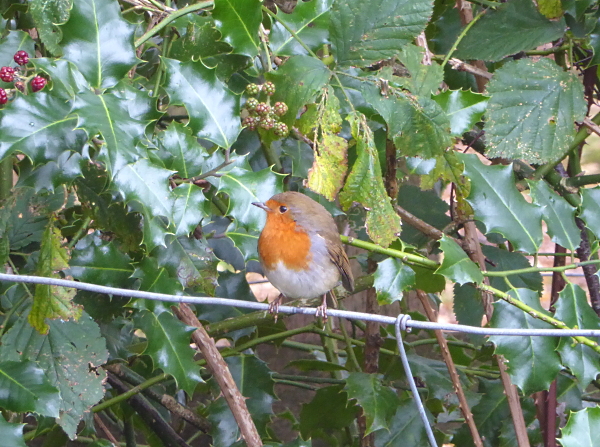
Also at the farm were two donkeys, saddled up and ready to give rides to little children. I was amused to see that they were named Homer and Marge.

It seems like only last week that I was commenting that plenty of green leaves were still on the trees but we have since had a couple of stormy nights, and most deciduous trees are now nearly bare. Back in Flaybrick, and walking around the oldest C of E section, we were disappointed to have missed the wonderful bronze display of the Cut-leaved Beeches, but they had dropped beautiful carpets of leaves onto the paths.
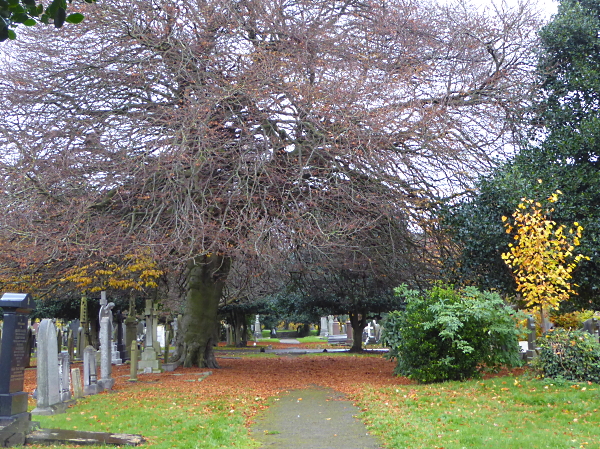
We kept on glimpsing a tree with a startlingly yellow canopy of leaves, and eventually found it. It was just the very common Norway Maple, nothing special, but a star at this time of year.
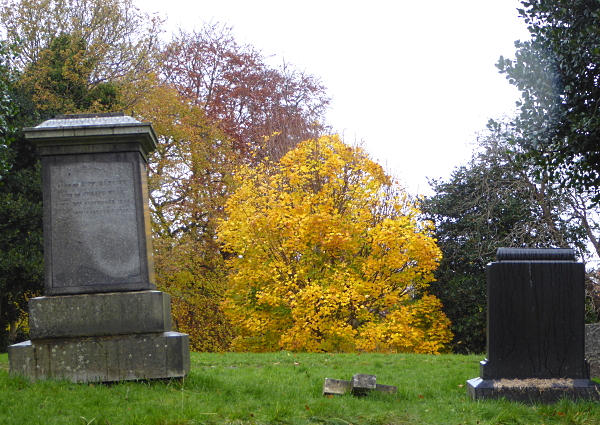
The bark of one tree caught our eye, and it looked like one of the Snake-bark Maples. The tree survey of July 2017 hadn’t mentioned one of those, but we know there are some trees that were missed. Is this one that the survey team overlooked? The tree had lost most of its leaves, but we managed to snag one that had lingered. A quick scout through my tree book (Mitchell’s Field Guide) suggests it might be a Père David’s maple Acer davidii, variety ‘Ernest Wilson’. It had reddish buds in pairs on opposite stalks.
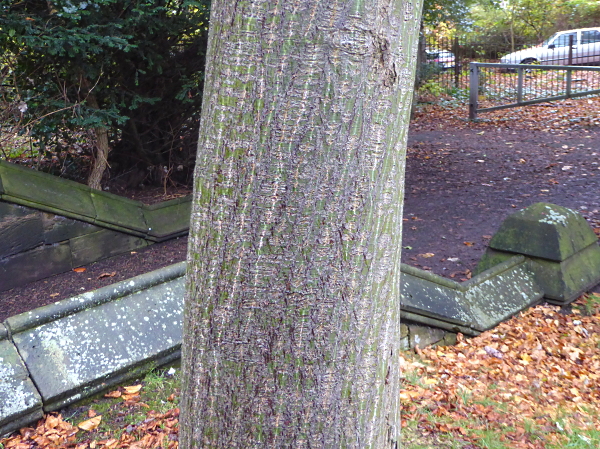
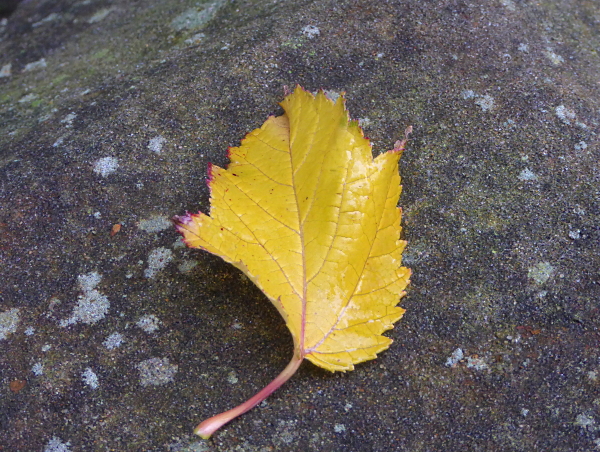
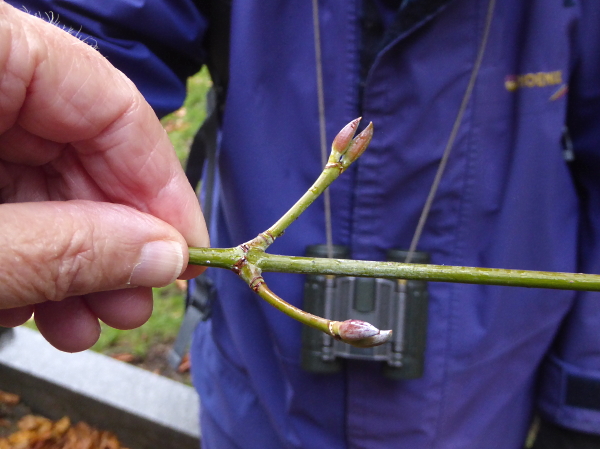
We looked at the Tulip Tree, hoping for spectacular autumn colour (the tree is famous for that in good years), but all the leaves were down, and they didn’t look as if they had been impressive. But we had more luck with the Swamp Cypress. It is one of the very few conifers which changes colour and sheds its leaves in the autumn. We caught it just on the turn. When it is doing that lovely subtle shading from green to red, it’s my favourite tree in all of Merseyside.
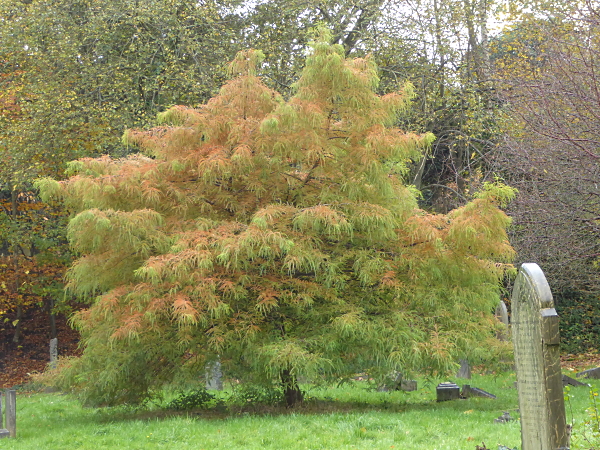
And finally, just as we were going, a good bird. From the top of a bare tree a Great Spotted Woodpecker had us under surveillance, making sure we were leaving its domain.
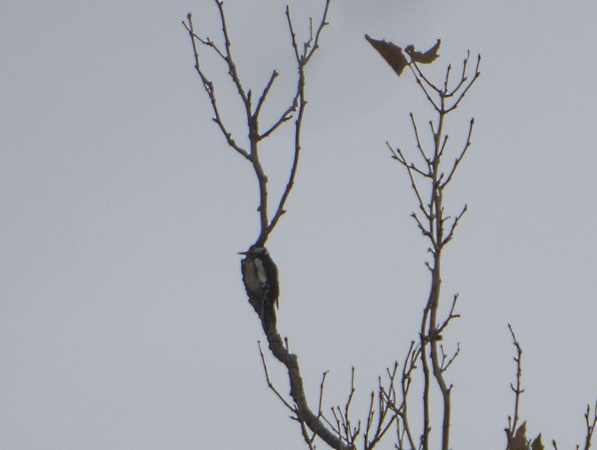
Public transport details: Bus 437 from Sir Thomas Street at 10.04, arriving Upton Road / Boundary Road at 10.30. Returned from the opposite stop on the 437 at 2.01, arriving Liverpool 2.22.
